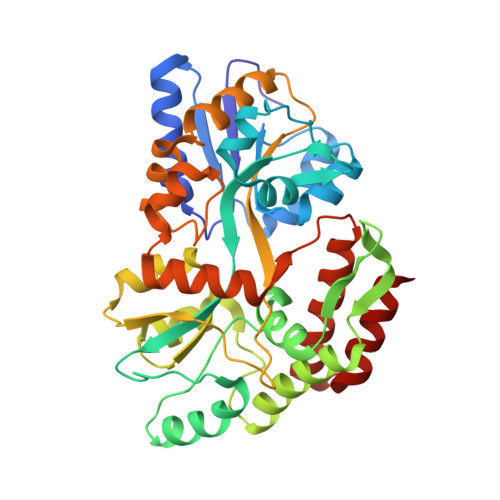Crystine: Fibrous Biomolecular Material from Protein Crystals Cross-linked in a Specific Geometry
Srinivasan, U., Iyer, G.H., Przybycien, T.A., Samsonoff, W.A., Bell, J.A.(2002) Protein Eng 15: 895-902
- PubMed: 12538909
- DOI: https://doi.org/10.1093/protein/15.11.895
- Primary Citation of Related Structures:
1JVX, 1JVY - PubMed Abstract:
Cysteine substitutions were engineered on the surface of maltose binding protein to produce crystine fibers, linear polymers of folded protein formed within a crystal. Disulfide bond formation between adjacent protein molecules within the lattice was monitored by X-ray crystallography. The cross-linked crystals were resistant to dissolution in water or neutral buffer solutions, even though the cross-linking was one-dimensional. However, crystine fibers were observed by transmission electron microscopy to dissociate from the crystals in acidic solutions. Some fibers remained associated as two-dimensional bundles or sheets, with a repeat unit along the fibers consistent with the packing of the individual protein molecules in the crystal. Neutralization of the acidic solutions caused the fibers to re-associate as a solid. Crystine threads were drawn out of this solution. In scanning electron microscopy images, many individual fibers could be seen unwinding from the ends of some threads. Crystine fibers are a new type of biomolecular material with potential applications wherever the use of proteins in a fibrous form is desirable, for example, the incorporation of enzymes into cloth or filtration material.
- Department of Chemistry, Rensselaer Polytechnic Institute, Troy, NY 12180, USA.
Organizational Affiliation:


















